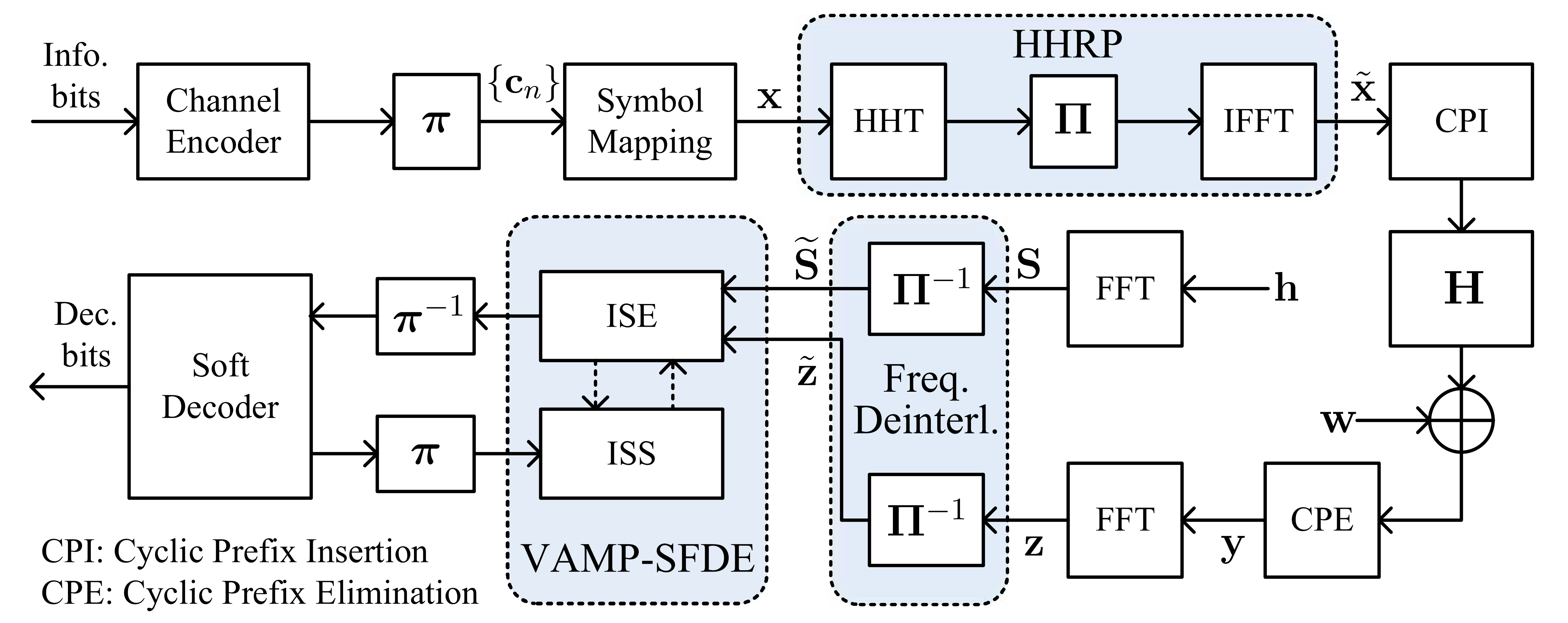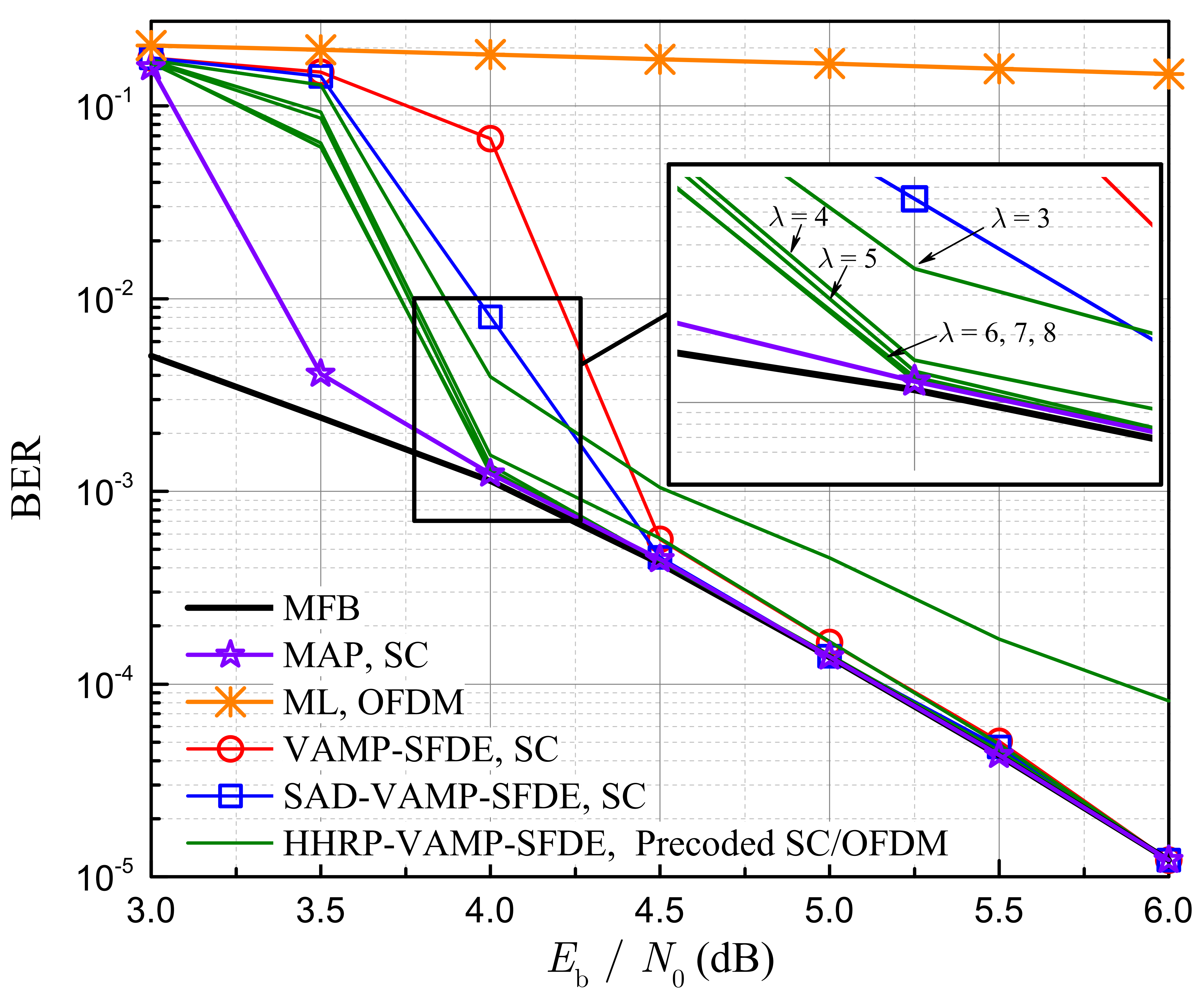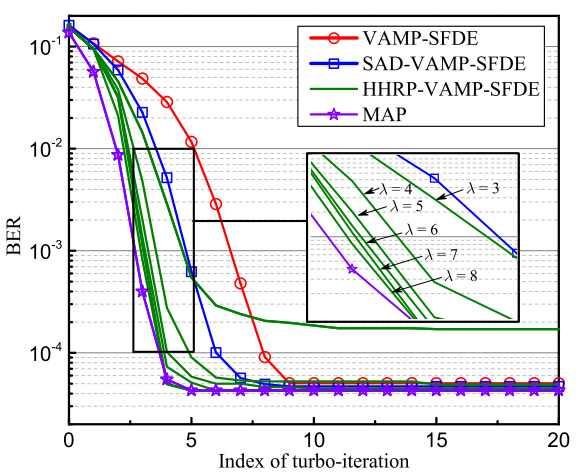In the communication systems, communication signals usually go through multiple paths from the transmitter to the receiver, introducing the inter-symbol interference (ISI) into the received signals. Channel equalization is the main technique to eliminate the ISI, making it a key issue in communications.
In theory, the maximum a posteriori (MAP) equalizer is optimal, but its complexity increases exponentially with the channel length. In light of the complexity and the practicability, researchers usually design the channel equalizer based on the minimum mean-squared error (MMSE) criterion, such as linear MMSE equalizer and decision feedback equalizer, etc. However, these equalizers have large performance loss.
In order to enable the low-complexity optimal equalization, researchers from the Institute of Acoustics, Chinese Academy of Sciences (IACAS) along with researchers from Southeast University proposed a Hadamard-Haar random precoding (HHRP) scheme, and obtained the near-optimal performance with a linear complexity based on the vector approximate message passing (VAMP) algorithm on the receiver side.
Researchers proposed an HHRP scheme which was the concatenation of the Hadamard-Haar transform (HHT), random symbol-interleaver, and the fast Fourier transform. The HHRP enabled a right-rotationally invariant (RRI) channel matrix, which was a necessary condition for the VAMP to achieve the Bayes optimal estimation. Meanwhile, it brought the time and frequency diversities, facilitating the symbol detection. In addition, the self-iterative HHRP-VAMP equalizer incurred linear complexity since the HHT could be implemented by only addition operations.
Simulation results showed that under the severe frequency-selectivity Proakis C channel, both the performance and the convergence of the HHRP-VAMP equalizer were comparable with the optimal MAP equalizer and were superior to other existing VAMP equalizers.

Figure 1. Block diagram of proposed HHRP-based transceiver system. (Image by IOA)


Figure 2. Bit error rate performance curves (left) and convergence comparisons (right) of the HHRP-based VAMP equalizers. (Image by IOA)
The research was supported by the National Natural Science Foundation of China (No. 61971472, 61871114, 61471351), and the National Key Research and Development Program of China (No. 2016YFC0300300).
The research has been published in the IEEE Communications Letters.
Reference:
LI Dong, WU Yanbo, TAO Jun, ZHU Min. Near-Optimal Self-Iterative VAMP Equalization enabled by Hadamard-Haar Random Precoding. IEEE Communications Letters. Mar. 2020. DOI: 10.1109/LCOMM.2020.2981073.
Contact:
ZHOU Wenjia
Institute of Acoustics, Chinese Academy of Sciences, 100190 Beijing, China
E-mail: media@mail.ioa.ac.cn


